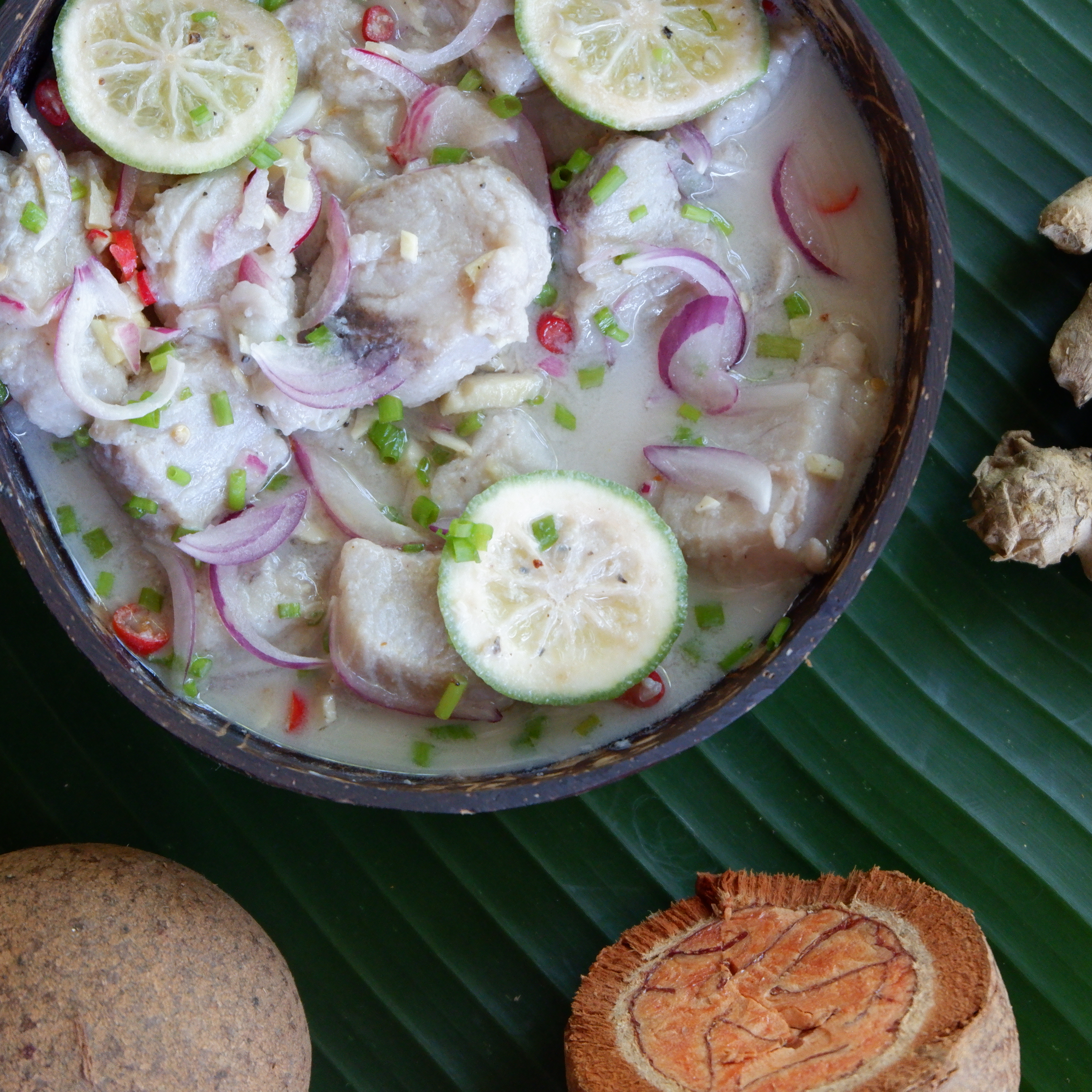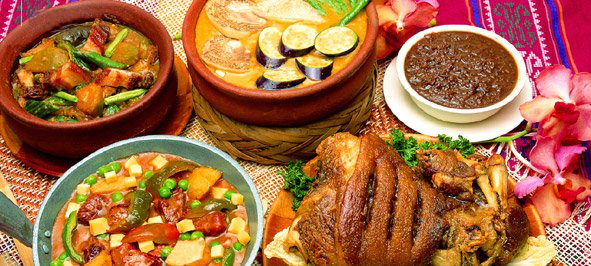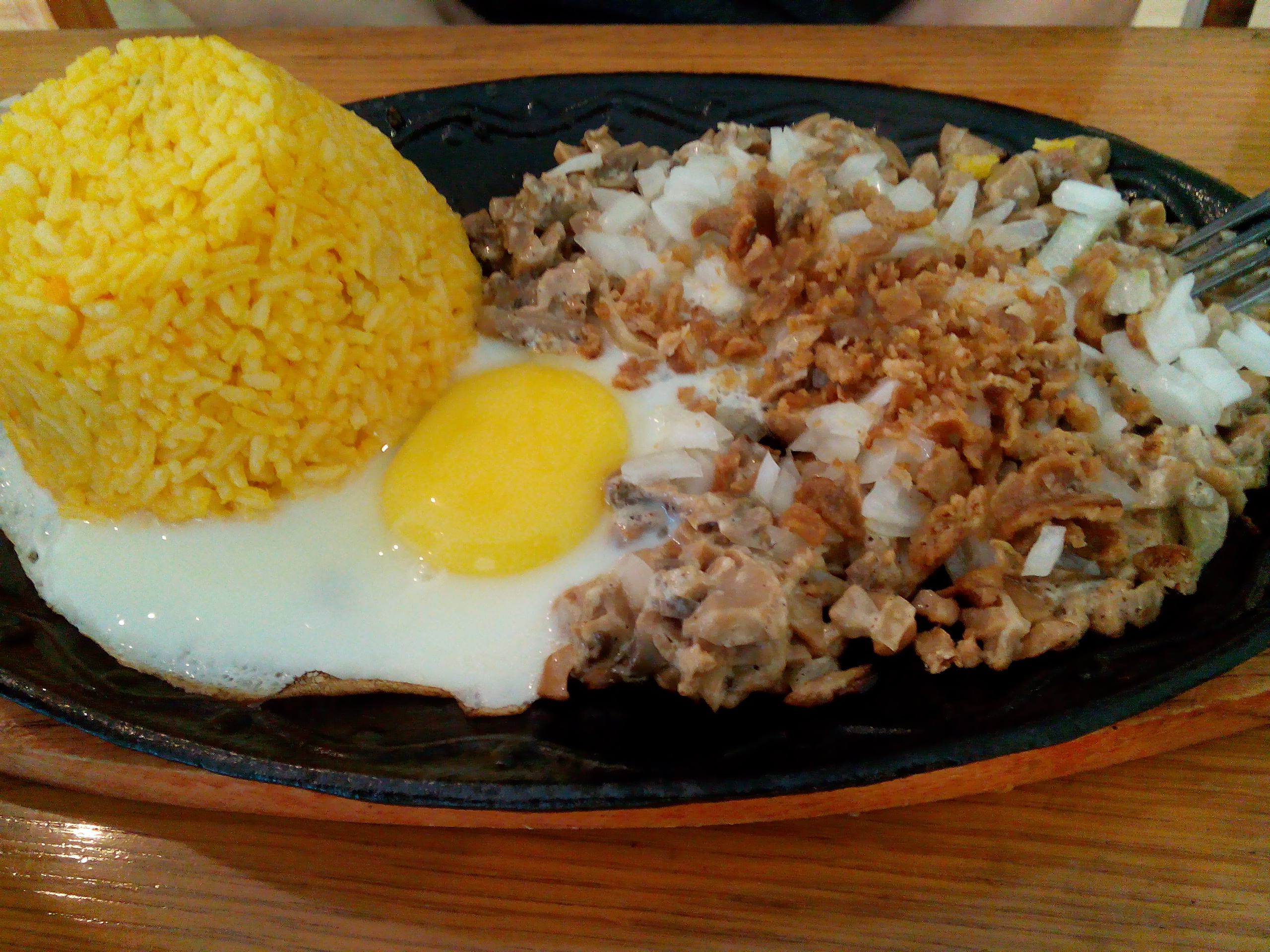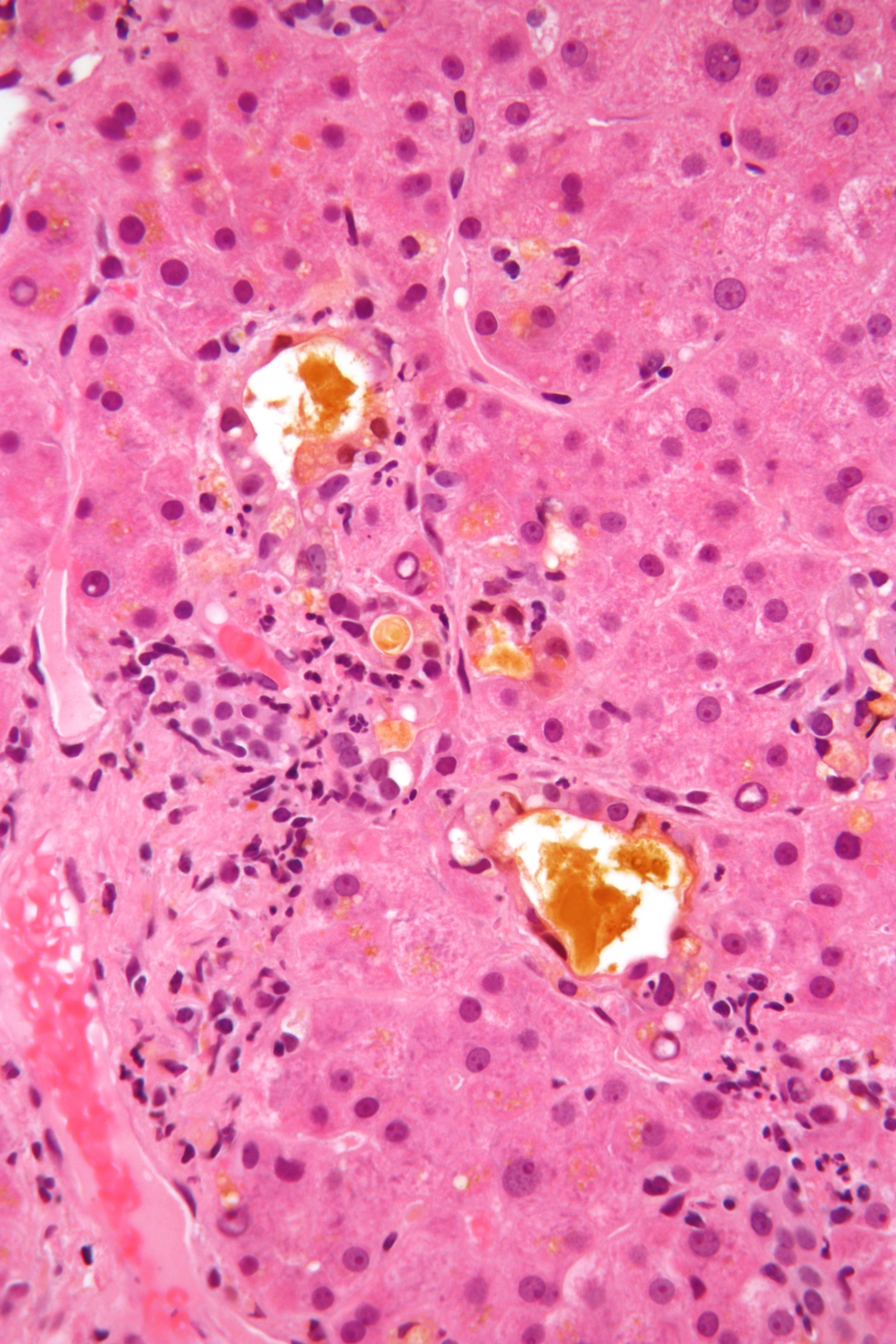|
Kilawin
or Kilawen is a Filipino cuisine, Filipino dish of chopped or sliced meats, poultry, seafood, or vegetables typically eaten as an appetizer before a meal, or as finger food with alcoholic drinks. is commonly associated with the Ilocano people, Ilocano dish "" (), lightly grilled goat meat traditionally eaten with , a bittering agent usually of bile or chyme extracted from the internal organs of the animal. However, for Ilocano people, Ilocanos "" is an intransitive verb for food preparation that encompasses all raw and lightly cooked or cured foods including dishes that would be described as . Meanwhile, non-Ilocano Filipinos often refer to only to meats those that are cooked similar to or . Etymology The Ilocano term is a cognate to other dishes of similar origin. (or ) and meaning "to eat (raw)" also include cognates such as , , , , , . History of the Philippines (900–1565), Pre-colonial Filipinos often ate their foods raw or rare. Meats, including fish, were ty ... [...More Info...] [...Related Items...] OR: [Wikipedia] [Google] [Baidu] |
Kinilaw
''Kinilaw'' ( or , literally "eaten raw") is a raw seafood dish and preparation method native to the Philippines. It is more accurately a cooking process that relies on vinegar and acidic fruit juices (usually citrus) to denature the ingredients, rather than a dish, as it can also be used to prepare meat and vegetables. Kinilaw dishes are usually eaten as appetizers before a meal, or as finger food () with alcoholic drinks. Kinilaw is also sometimes called ''kilawin'', especially in the northern Philippines, but the term ''kilawin'' more commonly applies to a similar lightly grilled meat dish. Description The most common kinilaw dish is ''kinilaw na isda'' ("fish ''kinilaw''"), prepared using raw cubed fish mixed with vinegar (usually coconut vinegar or cane vinegar) as the primary denaturing agent; along with a souring agent to enhance the tartness like ''calamansi'', '' dayap'' (key lime), '' biasong'' (also known as ''suhà''), '' kamias'' (bilimbi), tamarind, green ... [...More Info...] [...Related Items...] OR: [Wikipedia] [Google] [Baidu] |
Pinapaitan
or ''papaitan'' (lit. "to akebitter") is a Filipino- Ilocano stew made with goat meat and offal and flavored with its bile, chyme, or cud (also known as ). This gives the stew its signature bitter flavor profile or "" (lit. "bitter"), a flavor profile commonly associated with Ilocano cuisine. Similar to other Ilocano meat dishes, does not contain any vegetables other than those used for flavoring. Various offal include tripe, kidneys, liver, heart, intestines, pancreas, and spleen. Hide and blood may also be added. Alternately, it can be made with beef when goat is not available. It also goes by the name from the Spanish term "" meaning "to parboil". In Vigan and Pangasinan, made with beef is known as . It is enjoyed as a main dish served with rice or as (appetizer) with alcohol. One researcher has suggested that the consumption of may be an underlying display of machismo, not dissimilar to extreme chili-eating competitions. Nevertheless, the consumption of bitter foo ... [...More Info...] [...Related Items...] OR: [Wikipedia] [Google] [Baidu] |
Kelaguen
''Kelaguen'' is a Chamorros, Chamorro dish from the Mariana Islands eaten as a side dish or as a main course. Similar to ceviche, a pickling marinade of lemon juice, fresh coconut, scallion, green onions, salt and spicy hot peppers or ''donni' '' is used to marinate cooked Chicken (food), chicken, raw Shrimp (food), shrimp, Fish (food), fish or beef meat/Liver (food), liver. With the exception of the cooked chicken, the acids in the marinade "cook" the raw shrimp, fish or beef instead of heat. It is served cold or at room temperature and eaten as is, over rice, or wrapped in a warm corn or flour tortilla (or the Chamorro version, ''titiyas''). ''Kelaguen'' is derived from the Philippines, Filipino ''kilawin''. It was introduced by Filipino settlers when the Marianas and the Philippines were both part of the Spanish East Indies. ''Kelaguen'', however, has diverged in that it also incorporates influences from Latin America, like the use of tortillas. See also *Kilawin, the Filipi ... [...More Info...] [...Related Items...] OR: [Wikipedia] [Google] [Baidu] |
Ilocano People
The Ilocano people (), also referred to as Ilokáno, Iloko, Iloco, Iluku, or Samtoy, are an Austronesian peoples, Austronesian ethnolinguistic group native to the Philippines. Originally from the Ilocos Region, located on the northwestern coast of Luzon, they have expanded throughout northern and central Luzon, particularly in Cagayan Valley, the Cordillera Administrative Region, and the northern and western parts of Central Luzon. The Ilocanos constitute the third-largest Ethnic groups in the Philippines, ethnolinguistic group in the Philippines. Their native language is called Ilocano language, Iloco or Iloko. Ilocano culture reflects a blend of Catholic Church, Roman Catholic influences and pre-colonial Animism, animist-Polytheism, polytheistic traditions, shaped by their agricultural lifestyle and strong family-communal ties. Beyond the northern Luzon, large Ilocano populations are found in Metro Manila, Mindoro, Palawan, and Mindanao, as well as in the United States, part ... [...More Info...] [...Related Items...] OR: [Wikipedia] [Google] [Baidu] |
Filipino Cuisine
Filipino cuisine is composed of the cuisines of more than a hundred distinct Ethnic groups in the Philippines, ethnolinguistic groups found throughout the Philippines, Philippine archipelago. A majority of mainstream Filipino dishes that comprise Filipino cuisine are from the food traditions of various ethnolinguistic groups and tribes of the archipelago, including the Ilocano people, Ilocano, Pangasinan people, Pangasinan, Kapampangan people, Kapampangan, Tagalog people, Tagalog, Bicolano people, Bicolano, Visayan, Chavacano, and Maranao people, Maranao ethnolinguistic groups. The dishes associated with these groups evolved over the centuries from a largely indigenous (largely Austronesian peoples, Austronesian) base shared with maritime Southeast Asia with varied influences from Chinese cuisine, Chinese, Spanish cuisine, Spanish, and American cuisine, American cuisines, in line with the major waves of influence that had enriched the cultures of the archipelago, and adapted us ... [...More Info...] [...Related Items...] OR: [Wikipedia] [Google] [Baidu] |
Sisig
''Sisig'' ( ) is a Filipino dish made from pork jowl and ears (''maskara''), pork belly, and chicken liver, which is usually seasoned with calamansi, onions, and chili peppers. It originates from the Pampanga region in Luzon. ''Sisig'' is a staple of Kapampangan cuisine. The city government of Angeles, Pampanga, through City Ordinance No. 405, series of 2017, declared sizzling ''sisig babi'' ("pork ''sisig''") as a tangible heritage of Angeles City.Angeles Ordinance No. 405, Series of 2017 “An ordinance declaring Sizzling Sisig Babi as an intangible cultural heritage of Angeles, and establishing systems and policies in safeguarding the original recipe of Sizzling Sisig, providing mechanisms of implementation, and for other related purposes”) Origin The earliest known record of the word ''sisig'' can be traced back to 1732, and was recorded by Augustinian friar Diego Bergaño in his ''Vocabulary of the Kapampangan Language in Spanish and Dictionary of the Spanish Lan ... [...More Info...] [...Related Items...] OR: [Wikipedia] [Google] [Baidu] |
Intransitive Verb
In grammar, an intransitive verb is a verb, aside from an auxiliary verb, whose context does not entail a transitive object. That lack of an object distinguishes intransitive verbs from transitive verbs, which entail one or more objects. Additionally, intransitive verbs are typically considered within a class apart from modal verbs and defective verbs. Examples In the following sentences, verbs are used without a direct object: *"Rivers flow." *"I sneezed." *"My dog ran." *"Water evaporates when it's hot." *"You've grown since I last saw you!" *"I wonder how long it will be until I see you again after I move." The following sentences contain transitive verbs (they entail one or more objects): *"We watched ''a movie'' last night." *"She's making ''promises''." *"When I said that, my sister smacked ''me''." *"Santa gave ''me'' ''a present''." *"He continuously clicked ''his pen'' and it was incredibly annoying to me." Some verbs, called ambitransitive verbs, may entail o ... [...More Info...] [...Related Items...] OR: [Wikipedia] [Google] [Baidu] |
Chyme
Chyme or chymus (; ) is the semi-fluid mass of partly digested food that is expelled by the stomach, through the pyloric valve, into the duodenum (the beginning of the small intestine). Chyme results from the mechanical and chemical breakdown of a bolus and consists of partially digested food, water, hydrochloric acid, and various digestive enzymes. Chyme slowly passes through the pyloric sphincter and into the duodenum, where the extraction of nutrients begins. Depending on the quantity and contents of the meal, the stomach will digest the food into chyme in some time from 40 minutes to 3 hours. With a pH of approximately 2, chyme emerging from the stomach is very acidic. The duodenum secretes a hormone, cholecystokinin (CCK), which causes the gall bladder to contract, releasing alkaline bile into the duodenum. CCK also causes the release of digestive enzymes from the pancreas. The duodenum is a short section of the small intestine located between the stomach and the re ... [...More Info...] [...Related Items...] OR: [Wikipedia] [Google] [Baidu] |
Bile
Bile (from Latin ''bilis''), also known as gall, is a yellow-green/misty green fluid produced by the liver of most vertebrates that aids the digestion of lipids in the small intestine. In humans, bile is primarily composed of water, is produced continuously by the liver, and is stored and concentrated in the gallbladder. After a human eats, this stored bile is discharged into the first section of the small intestine, known as the duodenum. Composition In the human liver, bile is composed of 97–98% water, 0.7% bile salts, 0.2% bilirubin, 0.51% fats ( cholesterol, fatty acids, and lecithin), and 200 meq/L inorganic salts. The two main pigments of bile are bilirubin, which is orange-yellow, and its oxidised form biliverdin, which is green. When mixed, they are responsible for the brown color of feces. About of bile is produced per day in adult human beings. Function Bile or gall acts to some extent as a surfactant, helping to emulsify the lipids in food. B ... [...More Info...] [...Related Items...] OR: [Wikipedia] [Google] [Baidu] |





